Omar Kholeif’s Love Letter to London
By Omar KholeifI was guided to the concept of storying in 2012 while reading poet Kevin Young’s extraordinary collection, “The Grey Album: On the Blackness of Blackness.” I was led there by my late mentor, the writer and artist, Jean Fisher while researching the trickster. Storying for Young is a seat of possibility—one where imagination can become a site of constant invention and re-animation. Akin to Saidiya Hartman’s concept of “critical fabulation”—a mode of storytelling that merges the literary tradition of fiction, critical theory, and historical narrative, I was searching for tools to narrate stories that I believed I would never live to tell. The stories of modernity that remained latent, errant—out of sight and out of mind.
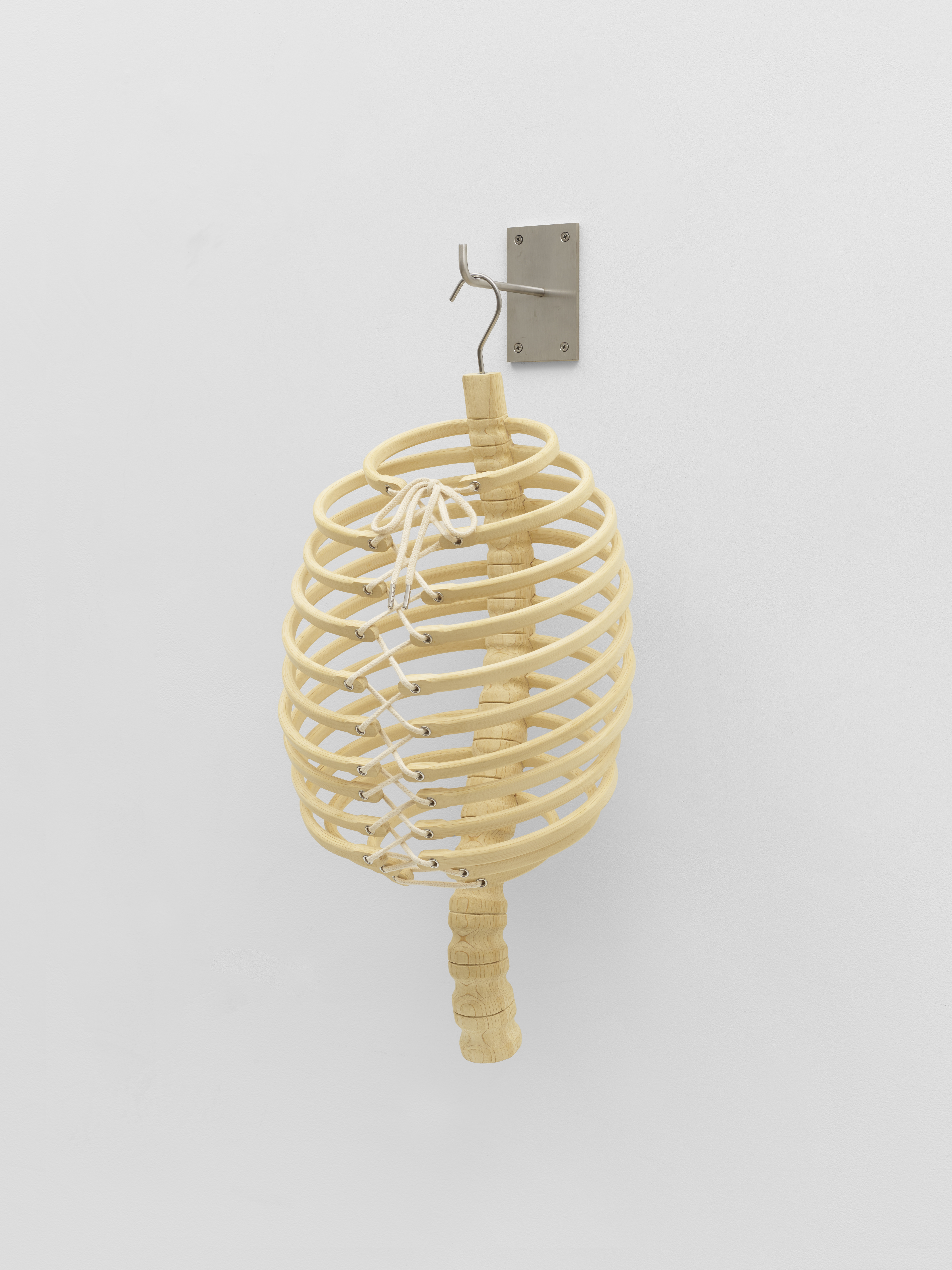
More recently, thanks to a generous suggestion by the curator Naomi Beckwith, I was familiarized with the writing of Gerald Vizenor whose critical thought on the Native American experience, and the necessity of “Radical Presence” and “Survivance” offered me a sense of permission—a right to speak with the many tongues I was born and raised with. The cadence of the polyglot voice, i.e., the bilingual, the trilingual, the multilingual, will be familiar to anyone who traverses the Lisson Grove and Bell Street area of London.
Over the decades, on this street and its perpendicular corners—where one can happen upon the shop stands and Levantine restaurants of Church Street and the infamous Arabic café culture of the Edgware Road—one need only to stop, and listen. Here is the bravura of the Arabic language uttered in a multitude of ways, idioms unspooling. My ears prick up as shop vendors, restaurant owners, asylum seekers and city workers can be heard code-switching—contouring and shading their accents to fit into the class structure of the person with whom they are engaging in that moment.
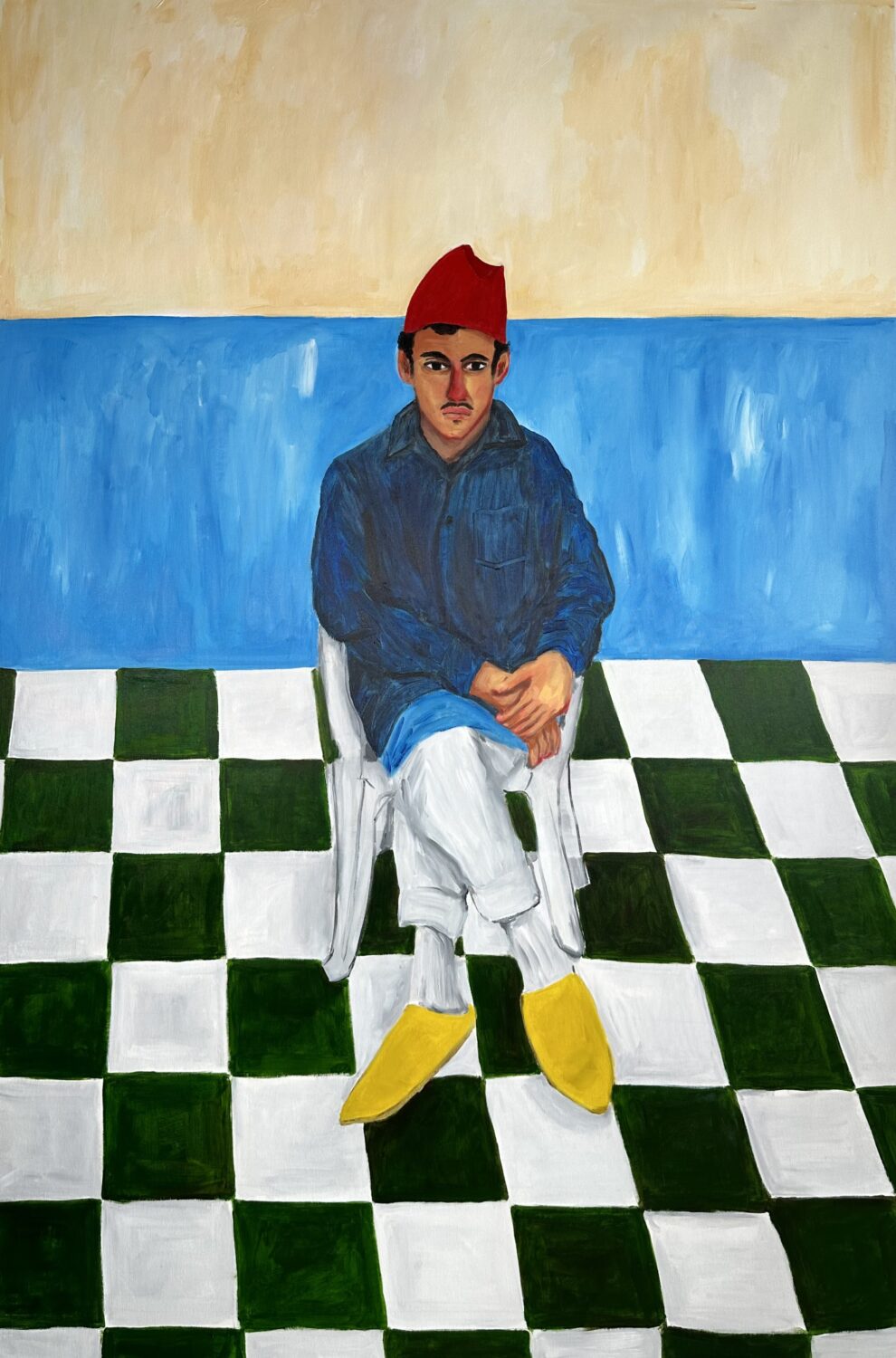
Creating a platform, a stage for voicing—for different kinds of lived experience to be heard—was the starting point for the exhibition, Finding My Blue Sky. The story of the weave, however, was going to unfold from inside of me and my person. I began conceiving of the project when I was working on a series of shows and books that explored the concept of longing and belonging. I was becoming ever more consumed by the work of artist Otobong Nkanga who features in the exhibition with some of her earliest work. Her topographical approach to the “diaspora” as imagined in her performative work was suggestive of a distinct relationship between body, land, and displacement. Through her embodied practice, I was propelled to keep looking. I returned to the writing of Etel Adnan and to the work of Simone Fattal, who has produced original art for Finding My Blue Sky.
I was able to imagine the possibility of reclaiming the concept of the “diaspora” as a seat of agency—as a possible lens through which to imagine the world—fragile and volatile as it may be, as a place where communion could constantly occur amongst strangers within the sacred spaces visioned for art.
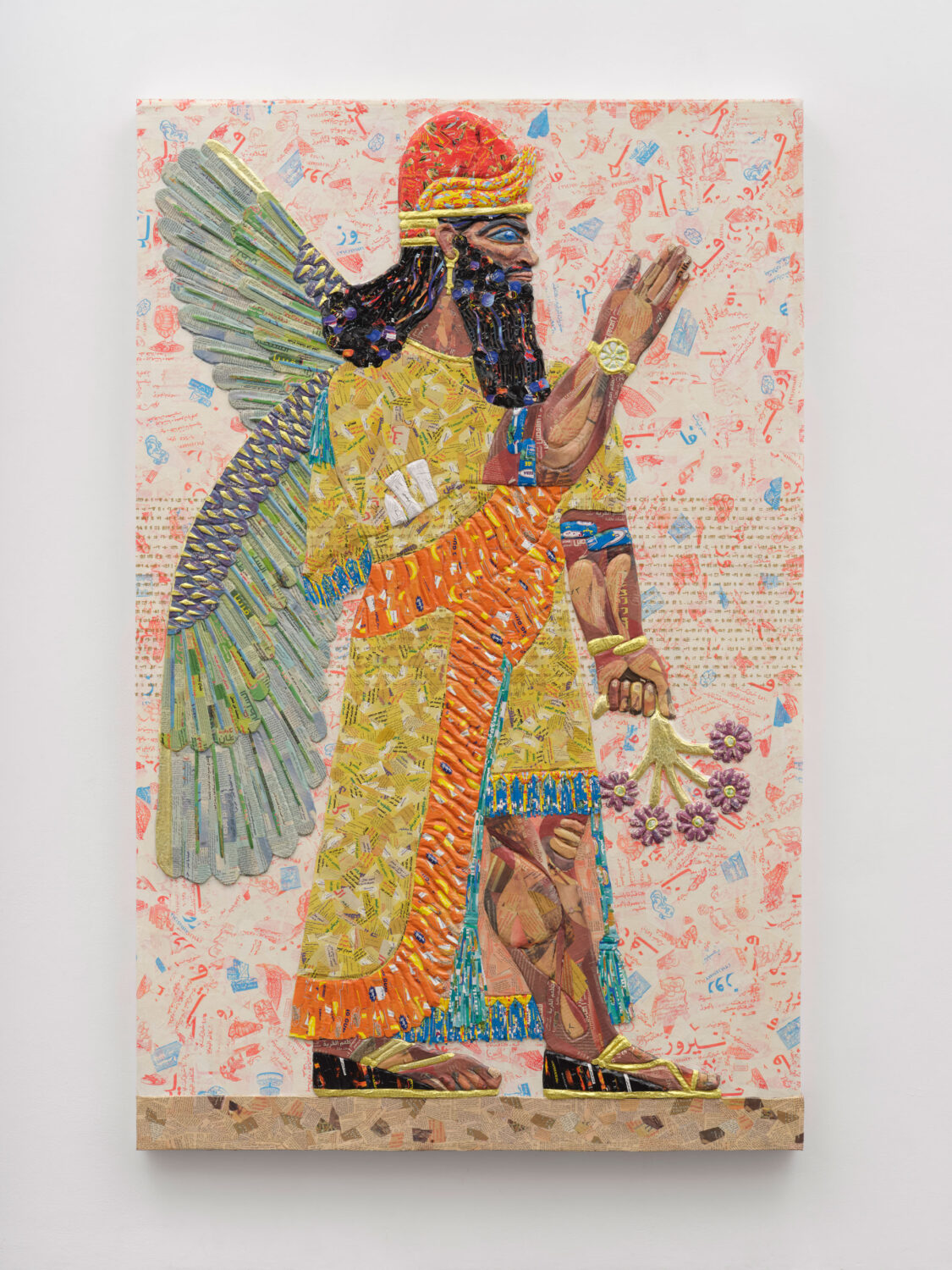
Having lived the entirety of my life, propelled from one proverbial home to another, constantly attempting to adopt and adapt to cultures, languages, mannerisms and accents that were not my own, I also believed, if untethered, and narrated sensitively that my relationships with artists could offer new ways of looking not only at art, but at visual culture. I decided, as Lubaina Himid, whose kanga paintings flank the corners of Bell Street and Penfold Street, often does, to begin with a question for the audience, and for myself: “What World Will You Make?”, which in Arabic translates to: “What World Would You Like to Dream Of?”
Finding My Blue Sky is the result of multiple desires, yearnings, and dreams. It is in my opinion, one of the most daring, ambitious, and experimental curatorial projects that I have undertaken. At once, it is an exhibition as autobiography, as well as an exhibition as a prompt to audience, an open-ended question and proposition. Through the convening of 27 artists, many of whom have never exhibited in Britain before, and with more than a dozen presenting newly produced site-specific artworks, it has become a show that wraps around the street like a second skin.
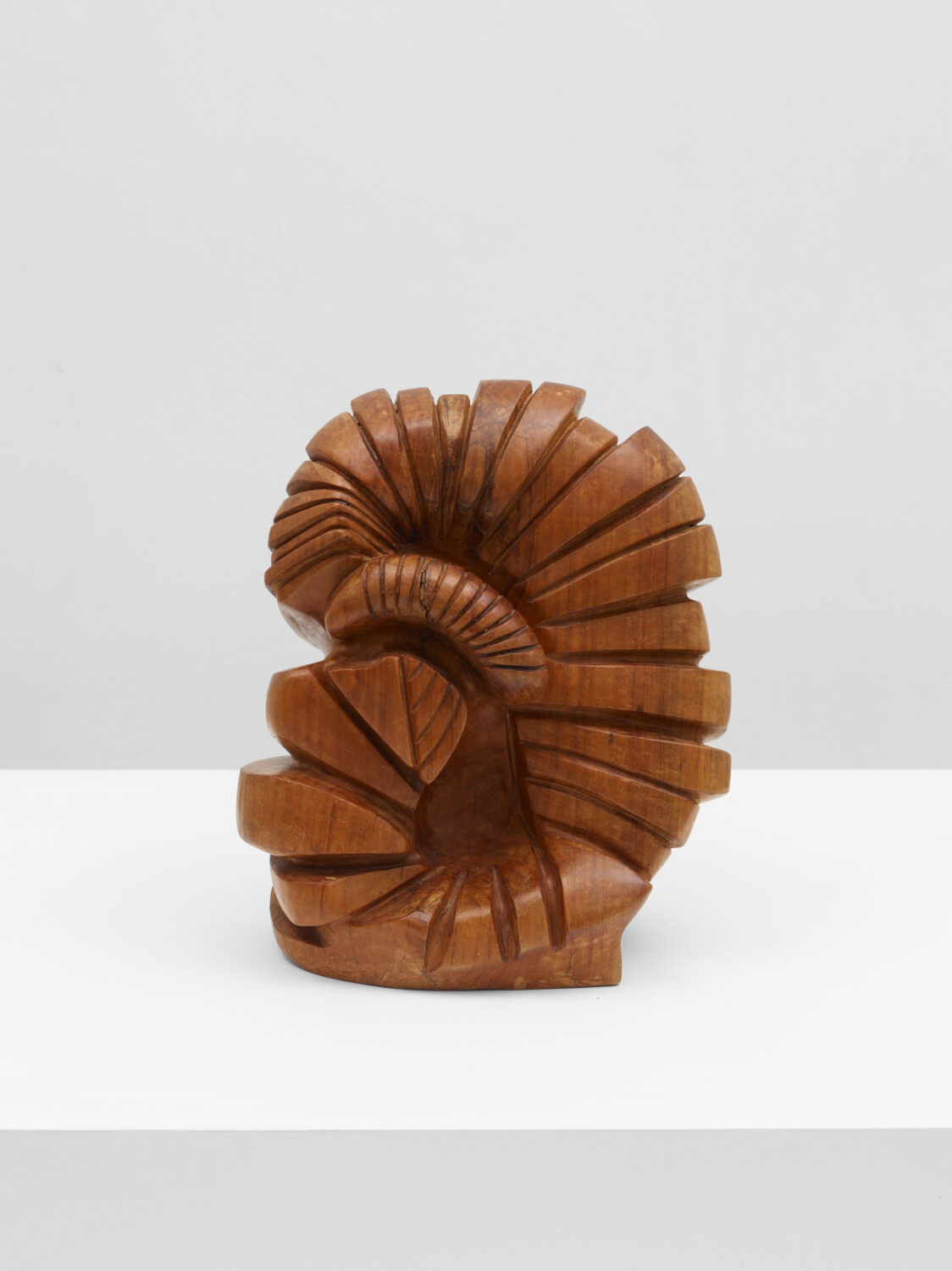
The process that led to this constellation of mutable patterns and forms emerged from nearly three years of embedded engagement and research working closely with the team at Lisson Gallery. The process was unlike anything that I had embarked upon before. The exhibition unfolded through sets of workshops, gatherings, conversations with staff, roundtables, weekly meetings, studio visits, all of which began through an informal dialogue. The turning point. Upon being asked to organize an exhibition at the gallery, I responded with: May I do a residency, to author a book, instead?
I was curious, eager and willing, as ever, to embed myself. To learn from and with a context that was entirely different from the institutional forms and systems that I was privy to. Likewise, the gallery’s rich history, archive, and architecture on this specific street were indeed also museological in scope—a subject that I decided to reflect in my choice to deeply engage with gallery artists, pulling from their archives, presenting historic artwork. One such example is Sean Scully’s Soft Ending, 1969, the artist’s first abstract artwork, which he produced upon his return from Morocco in 1969. It marks its public return to London for the first time in 56 years.
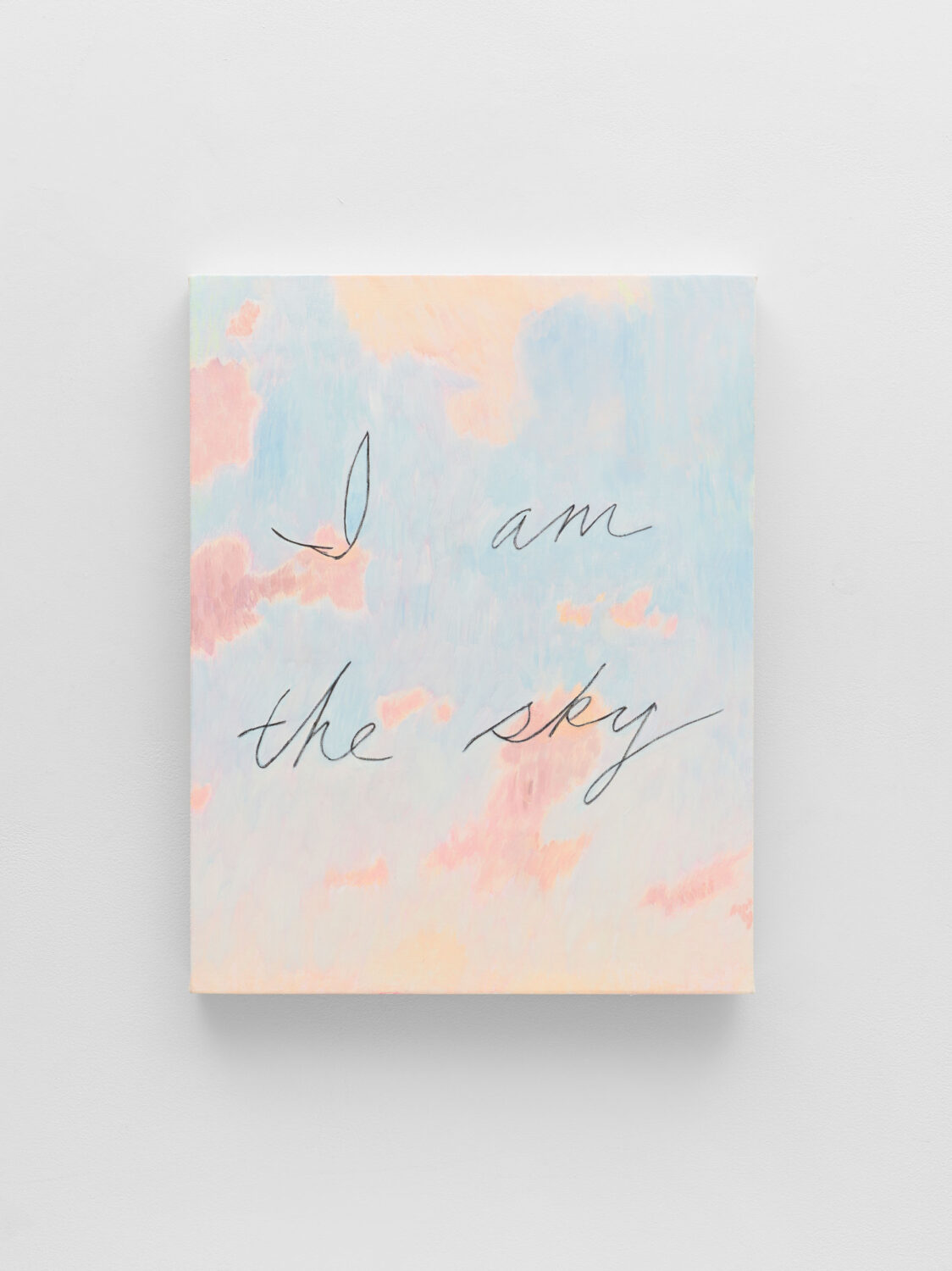
Together, these threads bind together to form a body, a whole. They constellate across planes, and surveillance devices in the works of Celia Hempton; through vivid color planes and topographies in the gem-like works of Luísa Correia Pereira. Of course, there is, and always is Huguete Caland, whose biography I have just finished writing—rushed to the printers to be ready for opening day. In Caland’s Bribes de Corps (Pink Feeling Blue), 1973, one may find themselves transfixed in the luscious color schemes, the moving orbitals, which are suggestive of a portal, a passage, beyond the threshold of living in this reality—but rather, a passing, of and from one world to the next. This work is a marker of prospective horizon—one that I have left open for audiences to go in search for—to find their own blue sky. For in this journey, the “my” can be supplanted by anyone who walks through the doors, or who encounters an artwork, to make up their own minds—to proxy through storying—the choice is yours.
Finding My Blue Sky is on view at Lisson Gallery London from 30 May – 26 July 2025.
Omar Kholeif, PhD is director of collections and senior curator at Sharjah Art Foundation, UAE; research professor of fine art at MIMA Research Unit, UK; founding director of artPost21 and founding series editor of imagine/otherwise. Their most recent projects, all in 2025, include the release of a biography on the artist, Huguette Caland: imagine otherwise; Lubaina Himid and Magda Stawarska: Nets for Night and Day at Mudam, Luxembourg; The Dreamwork: A Journey through Women’s Voices, Mudam Luxembourg and Utrecht Centraal, and touring, among others.
Feature image: Monir Shahroudy Farmanfarmaian, Untitled (C2), 1993/2009. © Monir Shahroudy Farmanfarmaian. Courtesy Lisson Gallery